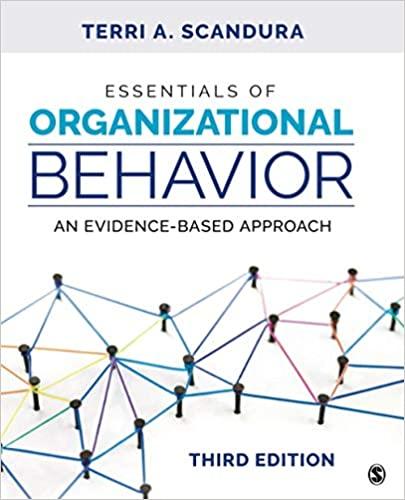Question
EXERCISE 11-2 Interpreting Extraordinary Items The president of Vancouver Viacom made the following comments to shareholders: Regarding management attitudes, Vancouver Viacom has resisted joining an
EXERCISE 11-2 Interpreting Extraordinary Items
The president of Vancouver Viacom made the following comments to shareholders: Regarding management attitudes, Vancouver Viacom has resisted joining an increasing number of companies who along with earnings announcements make extraordinary or nonrecurring loss announcements. Many of these cases read like regular operating problems. When we close plants, we charge earnings for the costs involved or reserved as we approach the event. These costs, in my judgment, are usually a normal operating expense and something that good management should expect or anticipate. That, of course, raises the question of what earnings figure should be used in assessing a price-earnings ratio and the quality of earnings.
Required:
a. Discuss your reactions to these comments.
b. What factors determine whether a gain or loss is extraordinary?
c. Explain whether you would classify the following items as extraordinary and why.
(1) Loss suffered by foreign subsidiaries due to a change in the foreign exchange rate.
(2) Write-down of inventory from cost to market.
(3) Loss attributable to an improved product developed by a competitor.
(4) Decrease in net income from higher tax rates.
(5) Increase in income from liquidation of low-cost LIFO inventories due to a strike.
(6) Expenses incurred in relocating plant facilities.
(7) Expenses incurred in liquidating unprofitable product lines.
(8) Research and development costs written off from a product failure (non-marketed).
(9) Software costs written off because demand for a product was weaker than expected. (10) Financial distress of a major customer yielding a bad debts provision.
(11) Loss on sale of rental cars by a car rental company. (12) Gains on sales of fixed assets. (13) Rents received from employees who occupy company-owned houses.
(14) Uninsured casualty losses.
(15) Expropriation by a foreign government of an entire division of the company.
(16) Seizure or destruction of property from an act of war.
CHECK
(1) No
(5) No
(10) No
EXERCISE 11-2 Interpreting Extraordinary Items Taken From Financial Statement Analysis By K.R Subramanyam Eleventh Edition Chapter 11 Equity Analysis and Valuation.
____________________________________________________
Exercise 11-4 Interpreting Disclosures in Interim Financial Statements
Interim accounting statements comprise a major part of financial reporting. There is ongoing discussion considering the relevance of reporting on business activities for interim periods.
Required:
a. Discuss how revenues are recognized for interim periods. Comment on differences in revenue recognition for companies (1) subject to large seasonal fluctuations in revenue, and (2) having long-term contracts accounted for using percentage of completion for annual periods.
b. Explain how product and period costs are recognized for interim periods.
c. Discuss how inventory and cost of goods sold can be given special accounting treatment for interim periods.
d. Describe how the provision for income taxes is computed and reported in interim reports.
(AICPA Adapted)
EXERCISE 11-4 Interpreting Disclosures in Interim Financial Statements Taken From Financial Statement Analysis By K.R Subramanyam Eleventh Edition Chapter 11 Equity Analysis and Valuation.
Step by Step Solution
There are 3 Steps involved in it
Step: 1

Get Instant Access with AI-Powered Solutions
See step-by-step solutions with expert insights and AI powered tools for academic success
Step: 2

Step: 3

Ace Your Homework with AI
Get the answers you need in no time with our AI-driven, step-by-step assistance
Get Started


